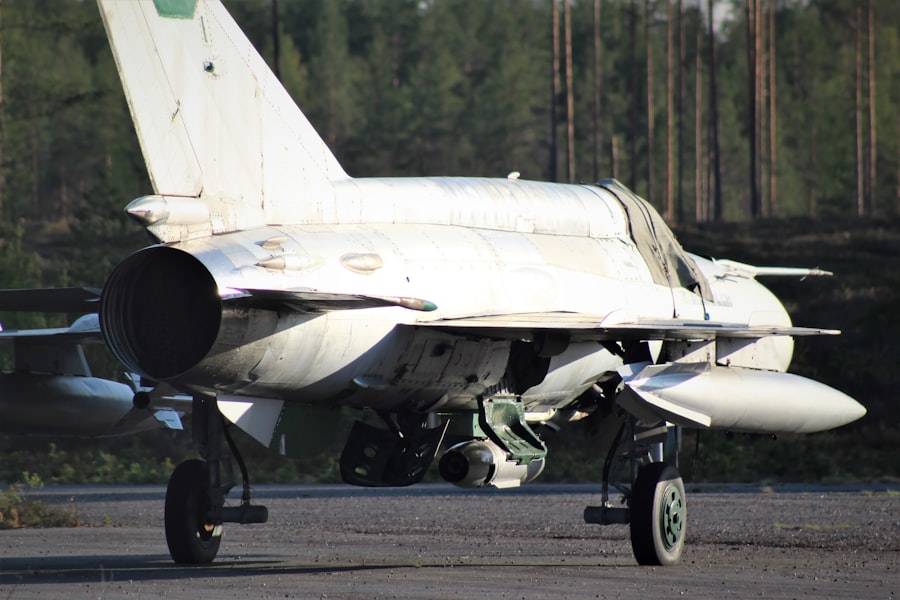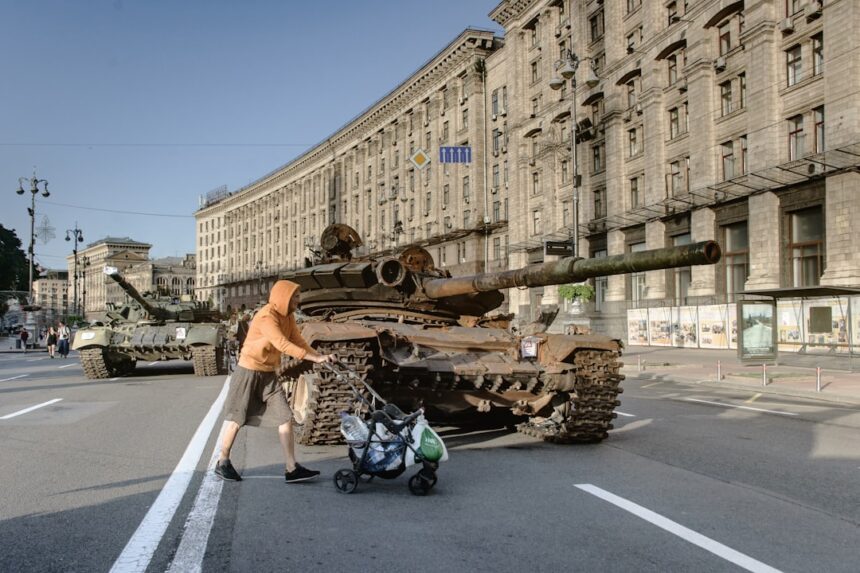The culture of military maintenance within Russia has long been a critical component of its defense strategy and operational effectiveness. This culture encompasses the practices, beliefs, and systems that govern how military equipment is maintained, repaired, and upgraded. Historically, the Russian military has prided itself on its ability to sustain a vast array of weaponry and technology, from tanks and aircraft to naval vessels.
However, the evolution of this culture has been marked by significant challenges and transformations, particularly in the post-Soviet era. Understanding the intricacies of Russian military maintenance culture is essential for comprehending the broader implications for national security and military readiness. As the geopolitical landscape continues to shift, the importance of a robust military maintenance culture cannot be overstated.
The ability to maintain and repair equipment efficiently directly impacts a nation’s military readiness and operational capabilities. In Russia, this culture has been shaped by historical precedents, economic conditions, and political influences. The interplay of these factors has led to both advancements and setbacks in the maintenance practices of the Russian armed forces.
An exploration of this culture reveals not only the strengths and weaknesses inherent in the system but also the potential pathways for future improvement.
Key Takeaways
- Russian military maintenance culture has a long history and is influenced by various factors.
- Lack of funding, corruption, and inadequate training have contributed to the decline of Russian military maintenance culture.
- The decline in maintenance culture has had a significant impact on military readiness and effectiveness.
- Efforts to improve Russian military maintenance culture are being made, but international implications of the decline are a concern.
- The future outlook for Russian military maintenance culture depends on addressing funding, corruption, and training issues, and recommendations for improvement are necessary.
Historical Overview of Russian Military Maintenance
The roots of Russian military maintenance culture can be traced back to the Tsarist era, where the need for a well-maintained army was recognized as essential for national defense. The establishment of formal military maintenance protocols began in earnest during the Soviet period, particularly after World War II when the Red Army emerged as a formidable force on the global stage. The Soviet Union invested heavily in its military infrastructure, leading to the development of sophisticated maintenance systems designed to support a vast array of military hardware.
This period saw the establishment of specialized repair facilities and a focus on ensuring that equipment was kept in optimal condition. However, the dissolution of the Soviet Union in 1991 marked a turning point for Russian military maintenance culture. The subsequent economic turmoil led to significant reductions in defense spending and a decline in the quality of maintenance practices.
Many repair facilities were closed or repurposed, and a once-thriving network of support began to deteriorate. The transition from a centrally planned economy to a market-oriented one created additional challenges, as resources became scarce and priorities shifted. This historical backdrop is crucial for understanding the current state of military maintenance in Russia and the factors that have contributed to its decline.
Factors Contributing to the Decline of Russian Military Maintenance Culture

Several interrelated factors have contributed to the decline of Russian military maintenance culture over the past few decades. One of the most significant issues has been the lack of consistent funding and resources allocated to maintenance operations. As defense budgets fluctuated in response to economic conditions, maintenance often became a secondary priority compared to other pressing needs within the military.
This lack of financial support has resulted in outdated equipment, insufficient spare parts, and an overall decline in maintenance standards.
Instances of embezzlement and misallocation of funds have diverted resources away from essential maintenance activities.
This corruption not only undermines trust within the ranks but also leads to inefficiencies that further exacerbate existing problems. The combination of inadequate funding and corruption has created a perfect storm that has severely impacted the ability of the Russian military to maintain its equipment effectively.
Lack of Funding and Resources
| Category | Metrics |
|---|---|
| Funding | Amount requested |
| Resources | Number of staff |
| Funding | Grant applications submitted |
| Resources | Equipment availability |
The issue of funding is perhaps one of the most pressing challenges facing Russian military maintenance culture today. In recent years, while there have been increases in overall defense spending, much of this funding has been directed toward new acquisitions rather than maintaining existing equipment. As a result, many units find themselves operating with aging hardware that requires extensive upkeep but lacks the necessary financial support for proper maintenance.
This lack of funding has led to a reliance on makeshift solutions and temporary fixes rather than comprehensive repairs. Maintenance personnel often find themselves working with limited resources, which can lead to shortcuts that compromise safety and effectiveness. The inability to procure spare parts or modernize equipment further exacerbates these issues, leaving many units ill-prepared for operational demands.
Consequently, this funding shortfall has created a cycle of decline that is difficult to break.
Corruption and Mismanagement
Corruption within the Russian military has long been a topic of concern, and its impact on maintenance culture cannot be overlooked. Instances of financial misconduct have resulted in significant losses for the military, diverting funds that could have been used for essential maintenance activities. Reports have surfaced detailing how funds earmarked for repairs have been siphoned off by unscrupulous officials, leaving maintenance crews without the necessary resources to perform their duties effectively.
Moreover, mismanagement at various levels has compounded these issues. Poor leadership decisions can lead to inefficient allocation of resources and inadequate oversight of maintenance operations. In some cases, personnel may lack accountability for their actions, further perpetuating a culture where corners are cut and standards are lowered.
This environment not only affects morale among maintenance personnel but also raises serious questions about the overall readiness and effectiveness of the Russian military.
Inadequate Training and Education

Another critical factor contributing to the decline of Russian military maintenance culture is inadequate training and education for personnel involved in maintenance operations. As technology evolves rapidly, it is essential for maintenance crews to stay abreast of new developments and best practices in their field. However, many personnel have not received sufficient training to handle modern equipment effectively.
The lack of investment in training programs has resulted in a workforce that may be skilled in traditional methods but ill-prepared for contemporary challenges. This gap in knowledge can lead to mistakes during maintenance procedures, further compromising equipment reliability and safety. Additionally, without ongoing education opportunities, personnel may become disengaged or disillusioned with their roles, leading to higher turnover rates and a loss of institutional knowledge.
Impact on Military Readiness and Effectiveness
The decline in Russian military maintenance culture has had profound implications for military readiness and effectiveness. As equipment becomes less reliable due to inadequate maintenance practices, units may find themselves unable to perform their missions effectively. This decline can manifest in various ways, from increased mechanical failures during training exercises to diminished operational capabilities during actual deployments.
Moreover, the erosion of trust between leadership and personnel can further exacerbate these issues. When soldiers lack confidence in their equipment’s reliability, it can lead to hesitancy in executing missions or engaging in combat scenarios. This lack of readiness not only affects individual units but can also have broader implications for national security as Russia navigates an increasingly complex geopolitical landscape.
Efforts to Improve Russian Military Maintenance Culture
In response to these challenges, there have been efforts within Russia to revitalize its military maintenance culture. Recognizing the importance of maintaining existing equipment alongside new acquisitions, military leadership has begun to prioritize funding for maintenance operations. Initiatives aimed at modernizing repair facilities and streamlining supply chains have also been introduced to enhance efficiency.
Additionally, there is a growing awareness of the need for improved training programs for maintenance personnel. By investing in education and skill development, the Russian military aims to equip its workforce with the knowledge necessary to handle modern technologies effectively. These efforts represent a crucial step toward rebuilding a culture that values maintenance as an integral part of military readiness.
International Implications of the Decline
The decline in Russian military maintenance culture carries significant international implications as well. As Russia grapples with its internal challenges related to military readiness, its ability to project power on the global stage may be compromised. This situation could embolden adversaries who perceive weaknesses within the Russian military structure.
Furthermore, as Russia seeks to modernize its forces while grappling with these internal issues, it may turn to foreign partnerships or acquisitions for assistance. This reliance on external support could alter existing geopolitical dynamics and raise concerns among neighboring countries regarding regional stability. The international community must remain vigilant as these developments unfold.
Future Outlook for Russian Military Maintenance Culture
Looking ahead, the future outlook for Russian military maintenance culture remains uncertain but not without hope. While significant challenges persist, there are signs that leadership is beginning to recognize the importance of addressing these issues comprehensively. Continued investment in training programs, modernization efforts, and anti-corruption measures will be essential for revitalizing this critical aspect of military operations.
Moreover, as global security dynamics evolve, Russia may find itself compelled to adapt its approach to military maintenance further. Embracing innovative technologies and best practices from other nations could provide valuable insights into improving efficiency and effectiveness within its armed forces.
Conclusion and Recommendations for Improvement
In conclusion, the state of Russian military maintenance culture reflects a complex interplay of historical legacies, economic realities, and systemic challenges. While there are significant obstacles to overcome—such as funding shortages, corruption, inadequate training, and declining readiness—there are also opportunities for reform and revitalization. To improve its military maintenance culture effectively, Russia must prioritize consistent funding dedicated specifically to maintenance operations while implementing robust anti-corruption measures that ensure accountability at all levels.
Investing in comprehensive training programs will equip personnel with the skills necessary to manage modern equipment effectively. By addressing these critical areas, Russia can work toward rebuilding a strong military maintenance culture that enhances its overall readiness and effectiveness on both national and international stages. The path forward will require commitment from leadership and collaboration among all stakeholders within the armed forces—a challenge that is both daunting yet essential for securing Russia’s future defense capabilities.
In the context of the article “The Collapse of Russian Military Maintenance Culture,” it is insightful to explore related discussions on military strategies and operational challenges. A pertinent article that delves into similar themes is available on the same platform, offering a broader perspective on military dynamics. You can read more about these issues in the article available at In The War Room, which provides an in-depth analysis of the strategic implications and operational hurdles faced by modern military forces. This article complements the discussion on maintenance culture by highlighting the broader strategic challenges that arise from such systemic issues.
WATCH NOW! 🎖️ Plot Twist: Russia’s Military Is Being Eaten Alive By Its Own Corruption
FAQs
What is the Russian military maintenance culture?
The Russian military maintenance culture refers to the practices and procedures followed by the Russian military in maintaining and servicing their equipment, vehicles, and weapons.
What led to the collapse of the Russian military maintenance culture?
The collapse of the Russian military maintenance culture can be attributed to a combination of factors such as lack of funding, outdated equipment, corruption, and a lack of proper training and oversight.
How has the collapse of the Russian military maintenance culture impacted the military’s effectiveness?
The collapse of the Russian military maintenance culture has led to a decrease in the effectiveness and readiness of the military. This has resulted in equipment failures, reduced operational capabilities, and an overall decline in the military’s ability to respond to threats.
What steps are being taken to address the collapse of the Russian military maintenance culture?
The Russian government has acknowledged the issues with the military maintenance culture and has taken steps to address them. This includes increasing funding for maintenance and modernizing equipment, as well as implementing reforms to improve oversight and accountability.



